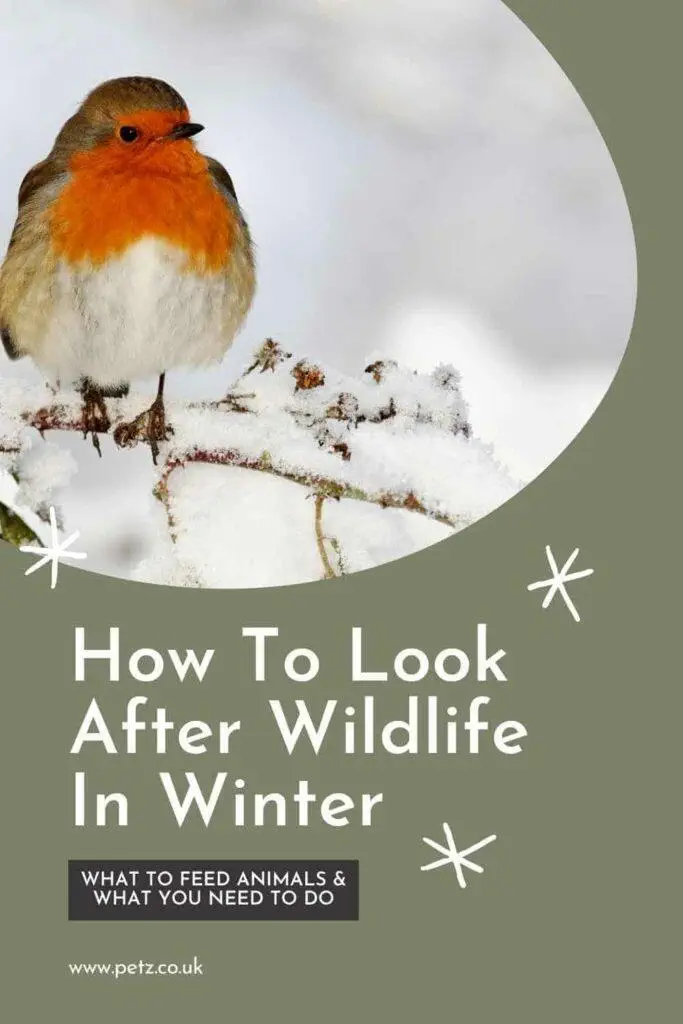Let’s face it – nobody likes winter. It gets cold, we have to defrost the car every morning before setting off for work, and we leave and come home when it is dark.
But at least we can go inside and get warm, with food in the fridge and cupboards. For some of our wildlife, it is a bit more difficult to stay out of the cold and find food. So they need some help from us humans, whether that means supporting their food source or giving them some shelter.
Here is how you can keep your garden wildlife-friendly throughout the colder, wetter months, even if there is some snow or frost on the ground.
When is winter?
It is December, January and February when the wildlife will need a bit of extra help. However, you may have to prepare a bit before this for any wildlife who will be hibernating during these months (such as hedgehogs). September is usually a good time to be putting out food ready for these animals.
Some will also stock up and store food (caching) ready for a winter where they are not having to leave their nest and use up energy much, in which case you should start putting food out in autumn, around October.

Tips for feeding wildlife in winter
- Put the food in a safe place – it should be out of reach from any predators which could use the feeding as a chance to get access to the wildlife, such as cats
- If you put the food in dishes, clean these after every night. Bird feeders should be cleaned weekly to prevent the spread of diseases, too
- Don’t go overboard – you should be supplementing their food in winter, not causing them to become over-reliant on what you put out
- You don’t want to attract pests, so clear any food not eaten at night, and ensure no birdseed falls to the ground where it is easy pickings for rats
Feeding Birds
Birds usually eat insects, worms, and grubs, as well as nuts, berries, seeds, grasses and fruits. These are hard to come by in winter, so leave out some extra food for them.
Ready-made birdseed is widely available online and in shops, as are things such as fat balls, bird-safe peanuts and insects like mealworms. Fresh water is still important too, as some other natural water sources may freeze over.
Ensure feeders are placed away from potential predator spots, and that you clean them weekly. You may have a few regular breeds which visit, in which case you can cater the food to them.
Something like a wild bird feeder is ideal for the winter months, as you can adapt it with types of food to suit the birds which visit your garden.
Squirrels
Squirrels ‘cache’ (store) food when it’s in good supply, to eat when they can’t find any. Put out some nuts such as hazelnuts, walnuts and almonds, which are safe to store.
They breed from December to February (as well as May to June), so start putting food out in autumn which will allow them to stock up. If you want to keep their food separate from that of the birds, you’ll need a squirrel-proof bird feeder for your flying friends.
Foxes
We start to see foxes in December after their young have dispersed. They will begin looking for food to stock up on, as in January the mating season starts and visiting gardens for food is not a priority.
Around March, they will start looking for food again. Young foxes have just been born, and members of the pack will take food to the nesting mother. Cheese, boiled potatoes, chicken carcasses, bread and fat scraps are good to put out at dusk.
Urban foxes will eat all sorts, though. They are carnivores, so even tinned dog food will do.
Badgers
Their favourite food is earthworms, which are hard to come by when the ground is frozen. So, lightly cooked meats, cheese, peanuts and fruit are good to leave out for visitors.
What else you can do for wildlife in winter
- Melt frozen ponds
Toxic gases build up in frozen ponds, killing fish or frogs which may be at the bottom. Check ponds every day for signs of ice.
If the pond does freeze over, place a pan of hot water on the surface to melt a hole. You should never break the ice or pour boiling water into the pond because the harshness or temperature change can harm the animals
- Safe hibernation spots
There are only three British mammal groups that truly hibernate – bat species, hedgehogs and the dormouse retreat from around October/November until March/April the following year.
Ensure they have safe areas to retreat to, such as covered areas in the garden, and if you need to move anything in your garden for storage or safety (such as furniture or piles of leaves), always check for animals hibernating first
- Nesting materials
Robins are one of the earliest bird breeds to nest. They will start to gather materials such as leaves, twigs and mosses as early as November ready for January, hence why we start to see them as Christmas approaches.
Leave piles of leaves in your garden, and don’t cut back hedges after October. If there are any twigs, again gather them in your garden. Some animals may even nest in the piles

